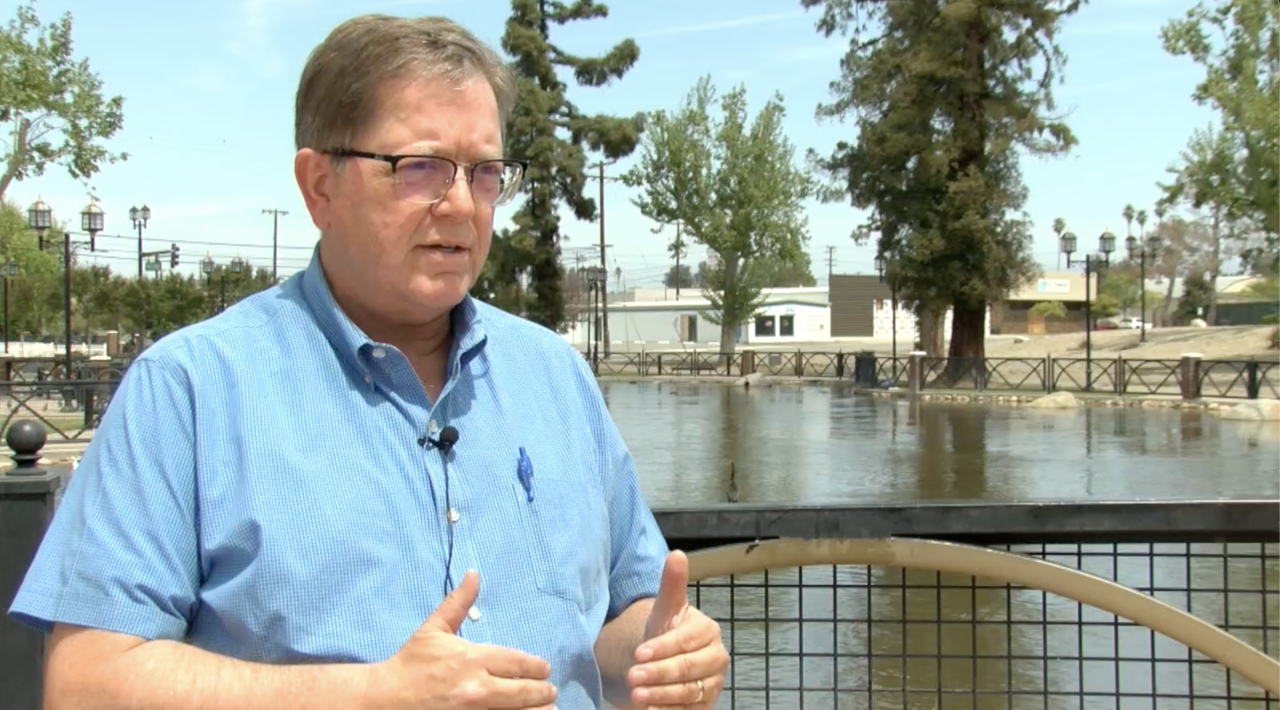BAKERSFIELD, Calif. (KERO) — The snowpack in California is more than double the average for this time of year, which presents challenges when it comes to avoiding flooding once that snow begins to melt. Some Bakersfield residents may have already seen one of the ways the Water Association of Kern County is dealing with the issue.
Large black tubes are being installed in the Kern River just off Coffee Road in Bakersfield. They're siphon tubes, and they're part of the preparations being made for what's likely to be an epic snowmelt.
"We are trying to get enough siphon there to push more water through that crossing, essentially," said Kern River Water Master Mark Mulkay.
Mulkay says the weir near Coffee Road has a lower capacity than others along the river in Bakersfield. There is a sand plug next to the weir that prevents the water from flowing around the weir.
"And that's a key point right there, to be able to take water out of the river to move it out without the water being damaged," said Mulkay. "So if we lose that sand plug right there, we lose control of the river."
The sand plug needs to be kept in place, but more water needs to go through the crossing. That's where the siphon tubes come in.
"Right now there's 2,500 CFS going through the weir and about another 2,500 CFS going through those siphons," said Mulkay. "We'll eventually have about 25 of those siphons in place."
Mulkay hopes the tubes will allow 6,000 cubic feet per second to flow over that crossing.

"Actually, the City of Bakersfield, who maintains the river, have plans to change and fix that weir. In fact, the city authorized, I believe it was just this February, authorized to fix the weir, but then we were in the middle of a flood event, so you can't fix it during a flood event," Mulkay said.
Mulkay says he typically calls the Army Corps of Engineers, which operates the Lake Isabella Dam, to request that water be released, but now the roles have reversed.
"Now the Corps of Engineers calls me and tells me how much water they want to come out," said Mulkay.
Right now, the corps is releasing around 58,000 cubic feet per second from the Lake Isabella Dam.
"The Corps of Engineers has requested that we go to 7,000 cfs, but we're not going to do that overnight. We are going to climb up about 100 second feet a day until we get to 7,000," explained Mulkay. "The reason we bring it up slowly is so that we can watch the levies, we can watch the bridges, we can watch the weirs. We can make sure everything is running properly."
Mulkay says that with the water levels in the river expected to remain high throughout the summer, people need to exercise extreme caution around and on the Kern River this year. Remember: Stay out. Stay alive.




